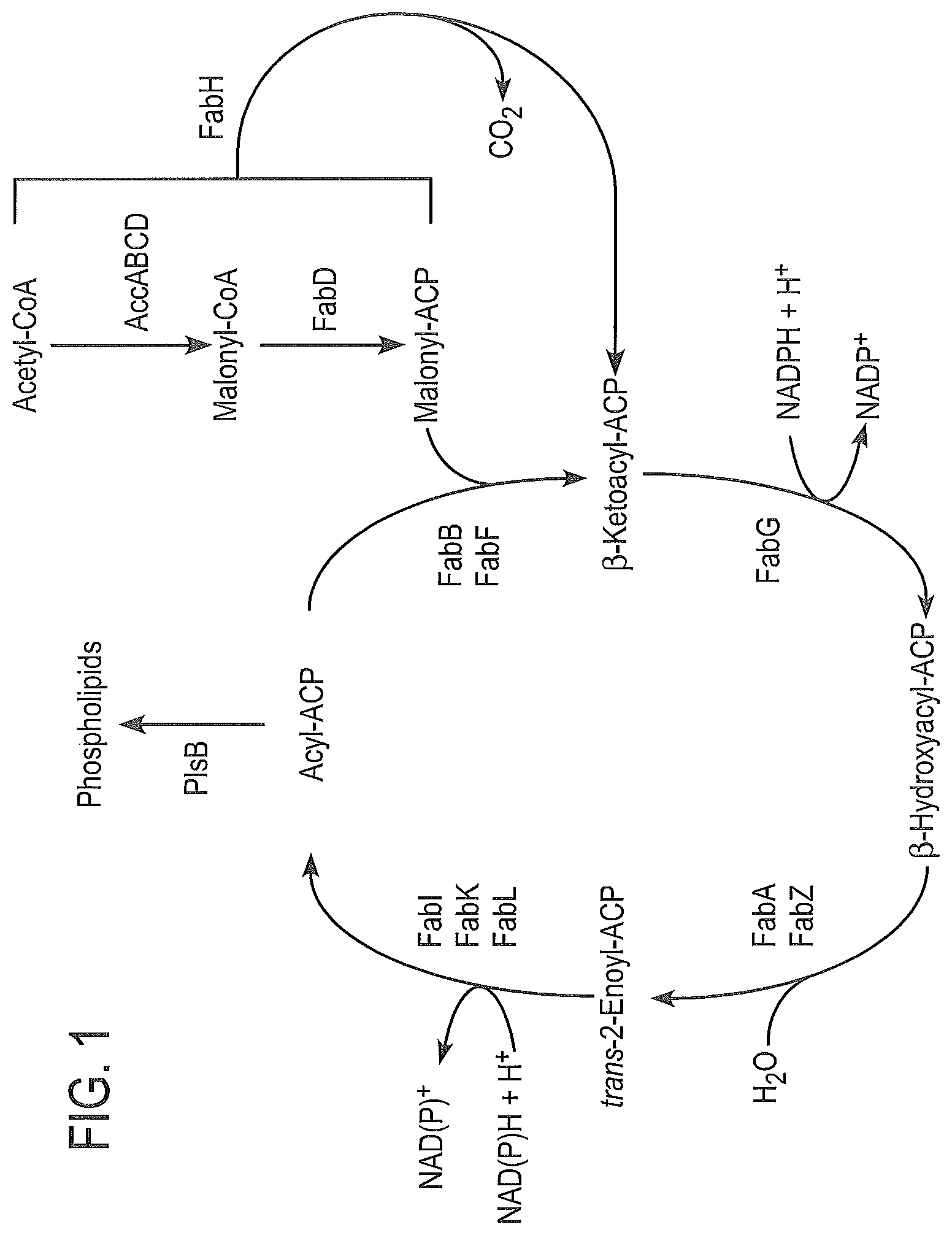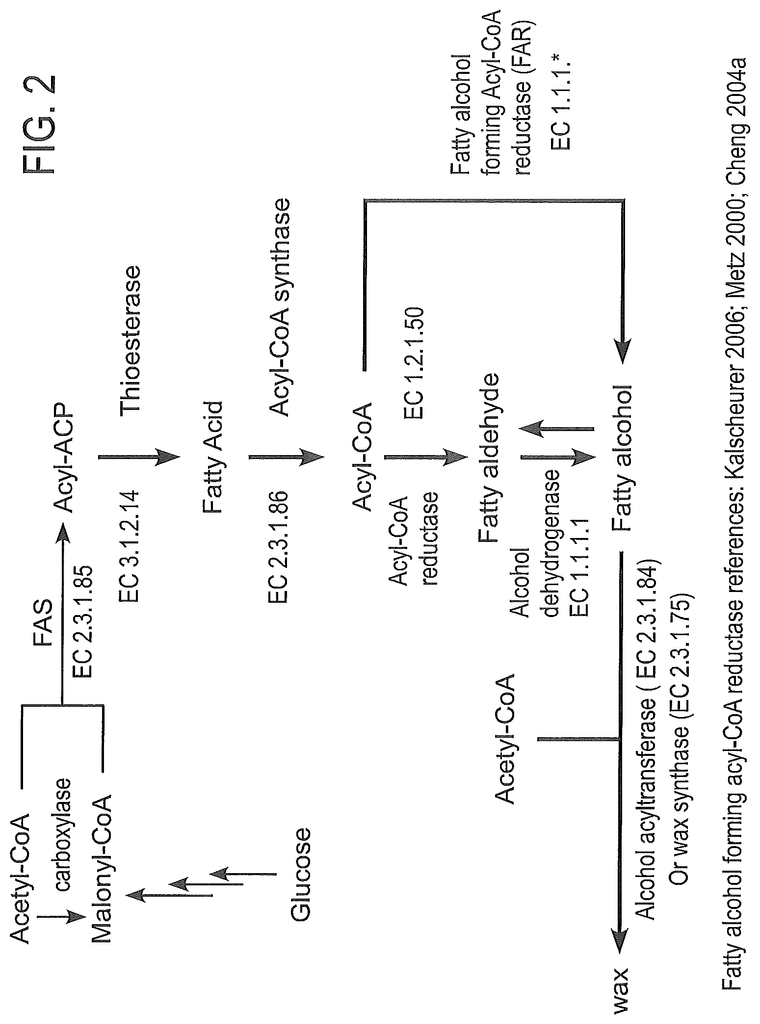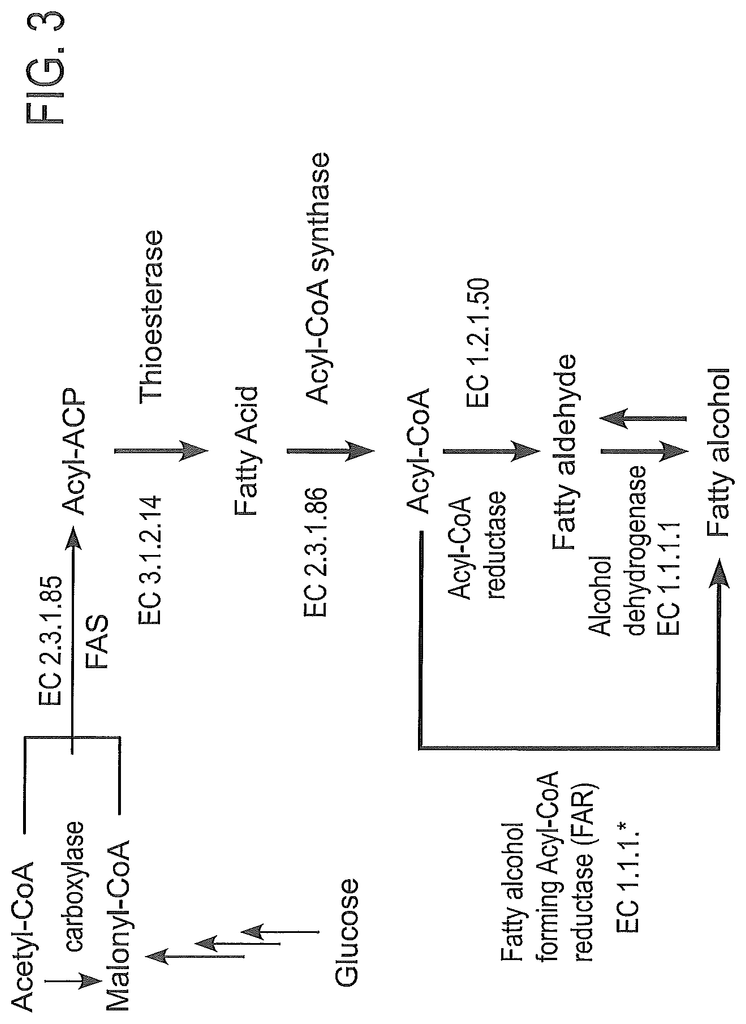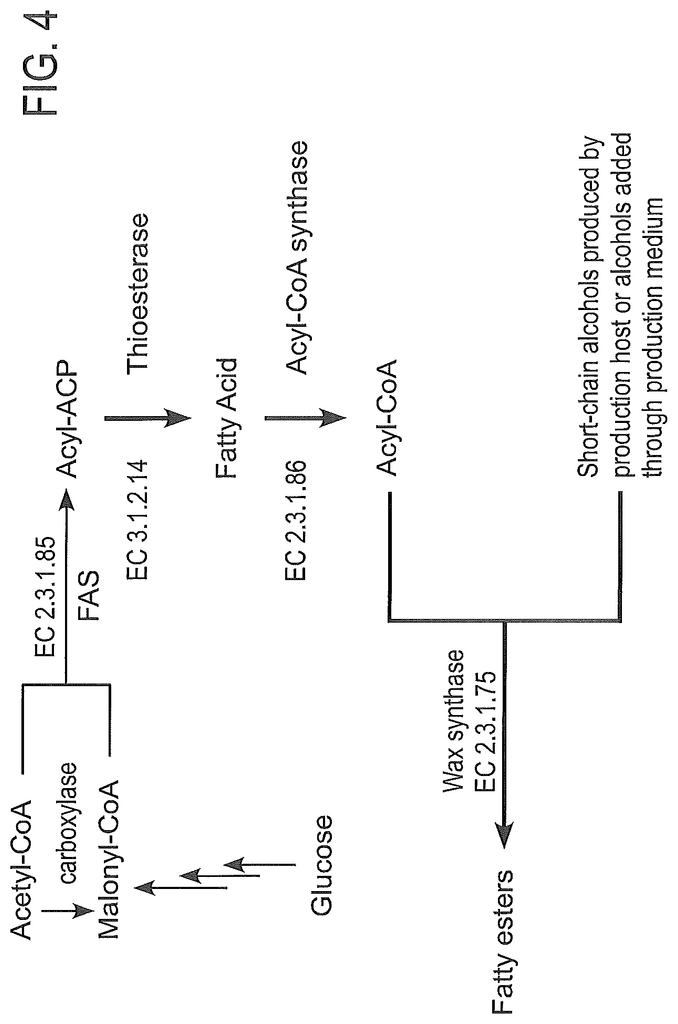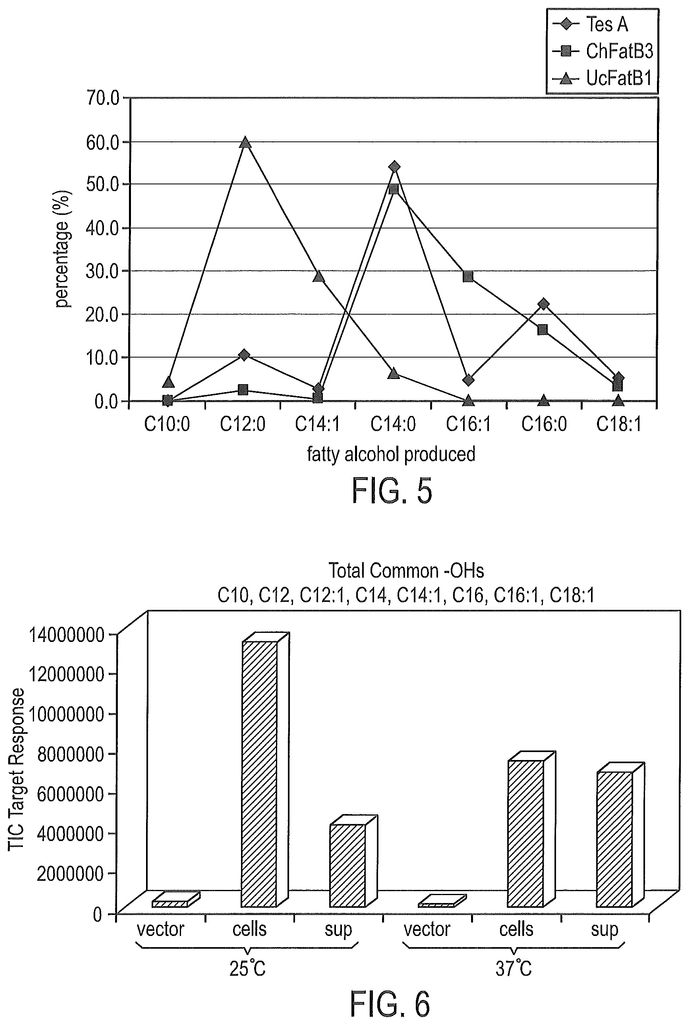Invented by Jay D. Keasling, Zhihao Hu, Chris Somerville, George Church, David Berry, Lisa C. Friedman, Andreas Schirmer, Shane Brubaker, Stephen B. del Cardayre, Genomatica Inc
The global market for fatty acids and their derivatives is expected to reach USD 25.7 billion by 2025, growing at a CAGR of 5.7% from 2020 to 2025. The major factors driving the growth of the market include the increasing demand for personal care and cosmetic products, the growing use of fatty acids in the food and beverage industry, and the rising demand for biofuels.
Fatty acids are produced by the hydrolysis of fats and oils, which are then further processed to produce various derivatives such as fatty alcohols, fatty esters, and fatty amines. These derivatives are used in a wide range of applications, including surfactants, emulsifiers, lubricants, and plasticizers.
The food and beverage industry is one of the major consumers of fatty acids and their derivatives. Fatty acids are used as food additives to improve the texture, flavor, and shelf life of food products. They are also used in the production of margarine, shortening, and other food products.
The personal care and cosmetics industry is another major consumer of fatty acids and their derivatives. Fatty acids are used in the production of soaps, shampoos, and other personal care products. They are also used in the production of cosmetics such as lipsticks, lotions, and creams.
The growing demand for biofuels is also driving the growth of the market for fatty acids and their derivatives. Fatty acids are used in the production of biodiesel, which is a renewable and environmentally friendly alternative to traditional fossil fuels.
The Asia-Pacific region is the largest market for fatty acids and their derivatives, accounting for more than 40% of the global market share. The region is expected to continue to dominate the market in the coming years, driven by the growing demand for personal care and cosmetic products, as well as the increasing use of biofuels in the region.
In conclusion, the market for the production of fatty acids and their derivatives is growing rapidly, driven by the increasing demand for these products in various industries. The food and beverage industry, personal care and cosmetics industry, and the biofuels industry are the major consumers of fatty acids and their derivatives. The Asia-Pacific region is the largest market for these products, and is expected to continue to dominate the market in the coming years.
The Genomatica Inc invention works as follows
The compositions and methods of producing fatty alcohols by recombinant bacteria are described, as well as the fatty alcohol compositions that can be produced using such methods.
Background for Production of fatty acid and derivatives thereof
The development of technology has been accompanied with an increase in reliance on fuels. These fuels are becoming more limited and harder to obtain. The burning of fossil fuels is occurring at an unprecedented pace, and it’s likely that fuel supply will soon be insufficient to meet the demand.
As a result of this, the focus has shifted to harnessing renewable sources of energy such as solar, water, wind and biomass. Biomasses can be used to create new fuels that aren’t derived from petroleum. Biofuel is one of the alternatives. Biofuel is a combustible fuel that is biodegradable and clean burning. It is made from long-chain alkanes, esters and esters. Biodiesel is suitable for use in many internal combustion engines, either in its pure form (also known as “neat”). Biodiesel can be used in any concentration or mix with petroleum diesel. The current method of producing biodiesel involves transesterification, which produces a mixture of fatty acids esters, and unwanted side products such as glycerin.
Disclosed are recombinant bacteria that can synthesize products from the biosynthetic pathway of fatty acids (fatty alcohols), as well as optionally release such products into fermentation broth. These fatty alcohols can be used to make specialty chemicals, among other things. These specialty chemicals are used to produce additional products such as nutritional supplement, polymers and paraffin substitutes.
The recombinant bacteria disclosed herein may be engineered to produce various fatty alcohols.
In one example, disclosure discloses a method of modifying a bacteria so that it can produce, and optionally release, fatty alcohols derived from a renewable source of carbon. These microorganisms can be genetically modified, for instance, by adding an exogenous sequence of DNA encoding proteins that can metabolize a renewable carbon resource to produce and, in some cases, secrete a fatty-alcohol composition. These modified microorganisms are then used in a fermentative process to produce fatty alcohols from renewable carbon sources (biomass). In some cases, a genetically tractable organism is used due to its ease of engineering the pathways that control growth, production, and reduce or eliminate side reactions that decrease biosynthetic pathway efficiency.
The invention provides microorganisms which produce fatty alcohols with defined carbon chains, branching and saturation levels. The production of homogeneous product reduces the cost of fermentation and separation. The * are provided. “The thioesterase-encoding peptides of the exogenous sequences of nucleic acids can be selected to produce homogenous products.
In some cases, the microorganisms that are engineered to produce fatty acids derivatives include E. coli (and its relatives), Z. mobilis (and their relatives), Rhodococcus opacus (and their relatives), Ralstonia eutropha(and its descendants), Saccharomyces cerevisiae and Lactococcus lochs.
The microorganism may also have some of its endogenous genes functionally removed or attenuated.
The microorganism may also have an additional gene over-expressed.
In some examples, microorganisms produced at least 1 mg fatty alcohol in a liter of fermentation broth. In other examples, the microorganisms produced at least 100 mg/L or 500 mg/L. They also produced 1 g/L and 5 g/L. In some cases, the fatty acid is produced by the microorganisms and then released. In other instances, the microorganisms are lysed before the separation of the product.
In some examples, fatty alcohol contains a carbon chain of at least 8, 10, 12 or 14, 16, 18, 20, 24, 26, 28, 30 or 34 carbons. In some cases, at least 50% of the fatty-alcohol product contains a long carbon chain. This can be 8, 10, 12, 16, 18, 20, 24, 26, 28, 30, or 34 carbons. In other examples, the fatty alcohol products contain at least 60% 70% 80% 85% 90% or 95% points of unsaturation.
Also provided are methods for producing alcohol. These methods include cultivating the microorganisms as described in this patent and separating out the product from fermentation broth.
The following description provides more details on these and other examples.
I. “I. Production of Fatty Acid Derived Derivatives”.
The host organism into which exogenous DNA sequences can be transformed is a modified organism. For example, an organism modified to increase production of acyl ACP or acyl CoA, to reduce catabolism of fatty acids derivatives and intermediaries, or to reduce feedback inhibitors at specific points along the biosynthetic pathways. Additional cellular resources may be diverted in addition to the modification of the genes described. For example, the lactate, sucinate, or acetate pathways could be attenuated and acetylcoa carboxylase (ACC), over-expressed. Modifications to the production host can be made through genomic alterations or extrachromosomal systems of expression, or a combination thereof. The FIGS. “FIGS.
A. Acetyl-CoA-Malonyl-CoA to Acyl-ACP
Fatty Acid Synthase (FAS), is a group peptides which catalyzes the initiation and extension of acyl chains” (Marrakchi, et. al., Biochemical Society 30:1050-1055 2002). The acyl-carrier protein (ACP), along with enzymes involved in the FAS path, control the length of the fatty acid produced and the degree of saturation. The FAS pathway can include AccABCD FabD FabH FabG FabA FabZ FabI FabK FabL FabM FabB FabF. The desired product can dictate whether one or more genes are attenuated, or even over-expressed.
For instance, the fatty acids biosynthetic pathways in the production hosts use the precursors malonyl CoA and acetyl CoA (FIG. 2). E. coli, or other hosts organisms that are engineered to produce these components in excess, can be used as a starting point for genetic engineering to create the desired output product (such fatty acids esters, hydrocarbons and fatty alcohols). The host strain can be modified in a number of ways, individually or collectively, to increase acetyl CoA/malonyl CoA/fatty acids and fatty acid derivatives. For example, to increase acetyl CoA production, a plasmid with pdh, panK, aceEF, (encoding the E1p dehydrogenase component and the E2p dihydrolipoamide acyltransferase component of the pyruvate and 2-oxoglutarate dehydrogenase complexes), fAbH/fabD/fabG/acpP/fabF, and in some examples additional DNA encoding fatty-acyl-CoA reductases and aldehyde decarbonylases, all under the control of a constitutive, or otherwise controllable promoter, can be constructed. These genes have Genbank accession codes: pdh, (BAB34380), panK (also called coaA AAC76952) aceEF (AAC73227 AAC73226) fabH, (AAC74175) fabD, (AAC74176), abG, (AAC74177), and fAbF, (AAC74179).
The Genbank accession numbers for these genes are: fadE (AAC73325), gspA (AAC76632), kihA(AAC74462), adhE (AAC74323), pflb(AAC73989), adhE/pta/poxB/ackB/BAB81430. Genbank accession number examples for these genes include fadE, gspA, kihA, adhE, pflb, poxB, pta, adhE, ackA, and ackB.
The engineered microorganisms that result can be grown under a specific environment. For example, one in which glycerol is limited (less than 1 % w/v of the culture medium). These microorganisms produce more acetyl CoA. Malonyl CoA can be overproduced by engineering microorganisms as described above. DNA encoding the accABCD enzyme (acetyl CoA carboxylase, accession number AAC73296, for example, EC 6.4.1.2), is included in the de novo synthesized plasmid. By including DNA encoding fatty acid synthase (for instance Accessions numbers CAA89087 and CAA98876) into the plasmid created de novo, fatty acid production can be achieved.
In some cases, acetyl CoA carboxylase is overexpressed in order to increase intracellular concentration by at least 2 fold, 5 times, 10 times, etc., relative to native expression.
Click here to view the patent on Google Patents.
